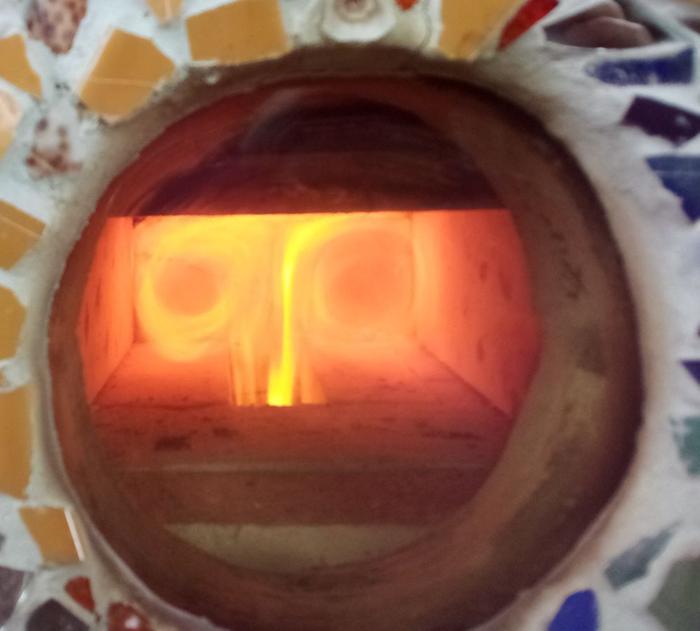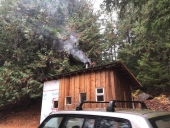posted 11 months ago
Well in this case, it was a case of *could* not follow the DSR3; I couldn’t source the right part.
As for the Vortex, I’ve felt a good bit of frustration figuring out exactly what the design IS, and I suspect I am not alone in that. That design has changed over and over and over again along the course of the (extremely long) development thread! Put a stumbling block in, nope, take it out entirely and make a shallower top box, nope, put it back in ….
This particular balance of chimney draft (strong, by the way), expansive bell, and high-located air intake seems to like having a stumbling block. It likes it a lot. Two burns in a row with the present configuration have behaved quite well now, even though today is muggy and windless. If it keeps up like this through some windy storms too, I will be content.
So, presently working Vortex configuration on this 5.5” system (23.9 in2 CSA):
* 20% primary air, no secondary. Because I have an airframe, this is delivered high in the firebox rather than low; I might look into whether lower-located air improves the slow coaling at some future date. Needed the door cracked open to catch the kindling alight, but then let it develop slowly. Fire remained well controlled throughout the burn.
* Firebox and port as is. Shelf between is extra thick because I wanted to raise the short vortex into the center of the round viewing window. It doesn’t seem to make any difference.
* Afterburner 4.2” high, 8” wide, more like 12.5” deep (my glass window is plenty sheltered behind the thick front wall; if yours isn’t, you should leave the full 4” gap.) Insulating material of course! CFB scraps at the moment. I will probably try to rebuild with something less toxic where possible, or at least coat it with sealant.
* ½” stumbling block restriction as it passes into the upper shelf chamber, plus a couple of scraps to narrow the full shelf width. So that’s about 1.7” x 9” or 65% CSA – a little bigger than recommended (in the mid-thread range of Vortex designs at least) but I don’t think I’d want to slow this fire down any more. Trev was calling this an “exit port,” meaning the exit from the afterburner, not from the whole core. This was placed back about ¾” from the shelf edge, as recommended.
* Upper shelf chamber 2.2”x 11”, or pretty near 100% CSA
* Final exit into bell 2.4”x 8” or 80% CSA.
A surprising note: Over the last few days of harried testing, I needed some ½” spacers in odd places, like between layers of the shelf and to temporarily replace the cooktop and form the stumbling block. I had some scraps of ordinary cement board leftover from a tile project, I think HardiBacker brand [?]. Dense cement and fiberglass integral to the mix, tough to cut. I threw it in because it was the right size, fully expecting it to burn out immediately. It didn’t. It appears completely unaffected. Wouldn’t trust it structurally in a refractory setting but I’m impressed. The stuff is certainly cheap enough to experiment with!
Video is a limitation in rural Vermont, so that likely won’t be coming. Fox, I will try to make a day to go sit in the public library with headphones and watch more of your videos … but that’s what it takes with our shonky internet here! Thank you for your fantastic public service in creating them. I look forward to it.
35.jpg


 2
2




 5
5








 8
8




 7
7




 7
7




 7
7




 5
5




 6
6













